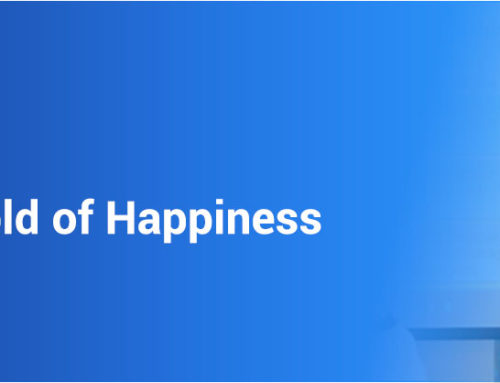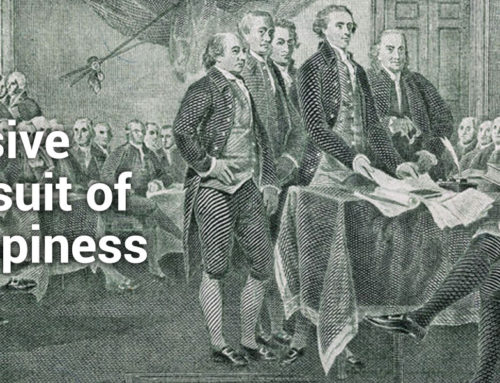
Having managed over 1000 scientists and engineers in several different companies over my career, I have always been amazed at the wide differences in productivity that existed among my staff members. In some cases, staff with similar talent and training differed by an order of magnitude in their ability to get things done. From my experience, I believe that highly productive people share two critically important attributes; well defined priorities and the ability to focus. Too many times I have heard unproductive staff confess “I can’t get my work done because there are too many distractions!”. This is a mindset that leads to much stress and lack of productivity. A better mindset is to think “I can’t get to all those emails, phone calls and meetings because I have too much work to do”. There are so many different ways that you can waste time when you could be spending it on productive work that I think of it as succumbing to the weapons of mass distraction.
Define your priorities
The highly productive people spend a considerable amount of time deciding what’s important to them. They develop a clear vision of where they want to be and who they want to become and have a written strategy on how to make it happen. Their goals have deep meaning and they are committed to achieving them. Without such a commitment, it is too easy to get caught up in responding other people’s strategies and reacting to the myriad problems of the day. While defining your priorities and developing a strategy is a necessary requirement it is not sufficient to improve your productivity. You must focus on executing your strategy every day despite all those weapons of mass distraction.
Focus on your strategy
A well-defined strategy is a roadmap of the steps you need to take to achieve your goals. Once you have this strategy written down and your goals clearly visible, your first priority when you wake up in the morning is to focus your time and attention on your goals, and not get distracted by other people’s goals. The last thing you should do is major in minor things. At the end of every day, take note of how much of your work day was spent on productive work.
Counteracting the weapons of mass distraction
Let’s tackle the ways to minimize each of the major weapons of mass distraction.
Emails/text messages – This is one of the major time-sinks for most professionals. It is not unusual to spend half of your day responding to emails. Do not mistake activity for productivity. For half of your work day, you did no real work! All of us recognize the need to communicate, and the use of emails and text messages are terrific tools for that purpose when used correctly. However, I’m sure that if you went back and analyzed how many of the emails you read and maybe responded to, the vast majority added little to no value to your priorities. The few emails that were important were probably difficult to identify due to the sheer volume of email traffic.
Try this approach to dramatically reduce the time you spend on emails. Send out an email to your staff and colleagues letting them know that you are planning to triage your emails using the readily available symbols and ask them to include them on each of the emails they send.
!!! – High Priority – Please use this symbol if you have an urgent request and I will respond today if possible or at the latest tomorrow
!! – Medium Priority – Please use this symbol for important information that I need to know to stay informed
! – Low priority – Please use this symbol for information I can read at my leisure
Phone calls
Phone calls are a classic case of urgent messages. An alarm is raised, be it a tone or music, that demands that you respond immediately whether or not it is important. Resist the urge to answer calls unless you know from the caller ID that it is someone you wish to speak to right away. I suggest that you put your phone on vibrate mode while you are doing productive work (your first priority remember?) so that the call for action is less intense. Unless its someone you need to speak to, do not answer! If it was an important call, they will leave a message. If there was no message you can almost assuredly assume that it was a sales call. So that you remain responsive, during your breaks from productive work (you should break every 60 to 90 minutes to remain fresh) you can review your messages and return calls as needed.
If you are fortunate enough to have a personal assistant, do what I did. Train your PA answer every call with “Tony is not available right now. I am his personal assistant, is there anything I can help you with?”. In my experience a good PA can handle 90% of phone calls; providing information, checking on your availability, and the like, without your intervention. When you break, he or she can brief you very quickly on what you missed. By the way, if you are trying to get through to someone yourself by phone, do not hesitate to ask their PA for help. They are extremely useful.
Meetings
If you are like most professional workers today, you spend a great deal of your time in meetings. When scheduled for the right reasons and done right, meetings are extremely useful group communication and decision-making tools. Unfortunately, a majority of meetings are a waste of time, time you could be using to do productive work. Here are some red flags to look out for.
- A meeting with no agenda – This is an indication that the meeting has been either hastily called or has no well-defined purpose or anticipated outcomes. Ask for an agenda before you commit to attend any meetings. If you are calling the meeting, show some respect for the attendees by sending an agenda letting them know why the meeting was called, the subjects to be discussed, and the intended outcomes.
- A meeting that doesn’t start on time – This shows a lack of respect for people’s time. If you are the victim, leave the meeting and ask to be called when the meeting is started. If you are the meeting planner, always show up early for your meetings and start them on time. The message will get out that you do not intend to waste peoples time.
- Regularly scheduled meetings – At one point in time, regularly scheduled meetings were set up for a specific purpose that made sense. Over time however, conditions change and the need for the meetings may wane. It is common to continue to hold these meetings out of habit rather than necessity. It is important from time to time to evaluate recurring meetings and challenge the need to continue them. If the meetings are just to convey information, that is better accomplished in an email (!! – Important but not urgent meeting information or; ! – read at your leisure).
- One- hour meetings – Rarely is one hour needed for a meeting. Most meetings if planned and conducted well can be finished in 30 minutes or so. On occasion. strategy meetings requiring multiple inputs will require much more than an hour and should be planned accordingly. Once you set a deadline for accomplishing what you need to accomplish in thirty minutes, you be surprised at how effective these meetings can be not to mention the appreciation of the attendees. This one initiative will cut your meeting time in half.
The best meetings have the following characteristics. If you follow these guidelines, you will spend considerably less time and accomplish much more from your meetings.
- They are well planned and have a specific agenda
- They start and finish on time
- Tangential questions are captured and answered offline
- Meeting Minutes are taken and distributed to all participants, attending or not.
Social Media
Social media can serve a useful purpose for obtaining and sharing information. Activities such as recruiting, networking, advertising can be legitimate productive work. E-commerce is without a doubt the way of the future. However, social media can become a seriously disruptive time sink. Psychologists are brainstorming ways to describe the addictive qualities of web surfing. If this is a way of providing relaxation and entertainment on your personal time and communicating with friends, there is nothing wrong with it. It only becomes a problem when it interferes with the productive work you had planned to meet your goals.
Lest this article and my recommendations lead you to think that I am all work and no play, I can assure you that you will find that this approach will free up more time to enjoy leisure activities. Remember only the organized can loaf! Time management is a misnomer- you can’t manage time. The minutes and hours will pass regardless of what you do. You can however manage the activities you pursue and the events that you attend. It’s been my experience that by developing and focusing on your strategy, you can avoid activity traps, reduce stress, and enjoy much more leisure time.


